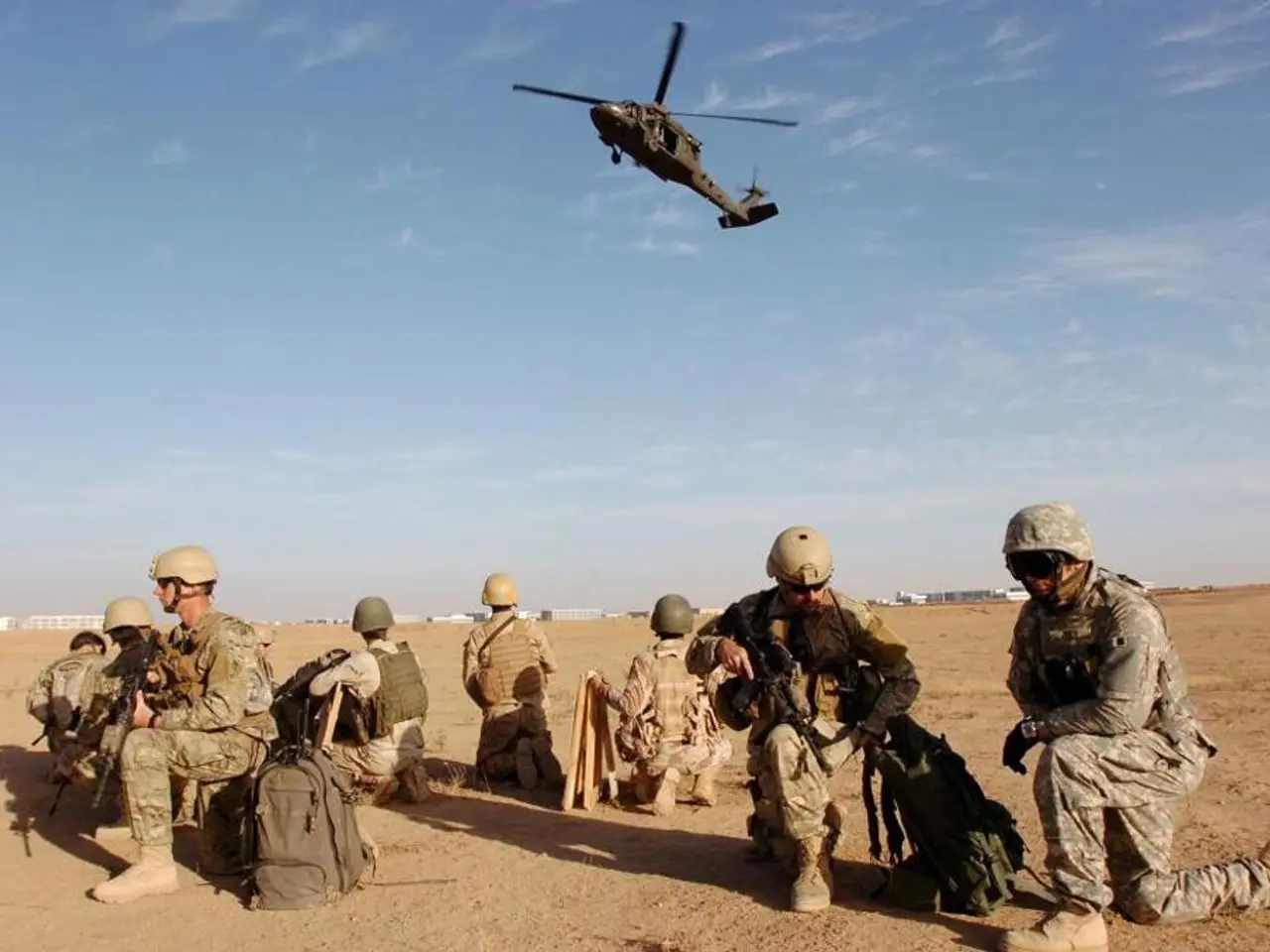Defense Department Forms Joint Interagency Task Force for Counter-Unmanned Aerial Systems Operations
**New Joint Interagency Task Force Aims to Counter Drone Threats**
In a recent announcement at a Center for Strategic and International Studies event, Vice Chief of Staff of the Army Gen. James Mingus unveiled a new joint interagency task force designed to accelerate the development and deployment of counter-unmanned aerial systems (C-UAS) capabilities [1]. The initiative comes as drones become increasingly accessible and weaponizable, posing significant threats to military operations [3][4].
The Army will lead this coordinated effort, involving multiple military branches, and the task force will be a joint interagency organization, ensuring collaboration between different military services and possibly other government agencies [1][3]. Gen. Mingus emphasized the need for flexible funding and authorities to expedite the development and acquisition of C-UAS technologies, similar to the model used by the Joint Improvised Explosive Device Defeat Organization (JIEDDO) [4].
The new task force aims to address these threats by coordinating joint solutions across different military branches and agencies, ensuring rapid response and adaptation to evolving drone technologies [1][2]. The challenge of countering drones has existed for over a decade, and it has been described as an "urgent and enduring threat" to U.S. personnel, facilities, and assets [5].
The Army's lead on the effort builds on its joint counter-small unmanned aircraft systems office and the Army's fiscal 2026 budget request includes at least $858 million for counter-UAS capabilities [5][6]. The Defense Department is establishing this new initiative to speed up the development and deployment of C-UAS capabilities, mirroring JIEDDO's model by emphasizing rapid response and interagency collaboration [2].
JIEDDO, established in 2006, focused on rapidly developing and deploying technologies and tactics to mitigate improvised explosive device (IED) threats during the wars in Afghanistan and Iraq [7]. It was empowered with flexible funding and rapid acquisition authorities, allowing it to quickly respond to emerging threats [4]. The creation of the new initiative is compared to the establishment of JIEDDO during the Global War on Terror [1].
Former Defense Secretary Lloyd Austin created a targeted counter-UAS strategy in late 2024, recognizing the significance of drones as a threat, both domestically and overseas [5]. Mingus is asking Congress to support flexible funding lines for UAS, counter-UAS, and electronic warfare as part of the Army's fiscal 2026 budget request [6].
Since 2019, the Army has been responsible for coordinating counter-drone efforts across the Pentagon and military services [1]. The new joint interagency task force will continue this effort, with the hope of keeping pace with the evolving threat of drones in modern warfare.
The federal workforce will be reimagined as the new joint interagency task force, led by the Army, aims to workforce reimagined, focusing on the development and deployment of cybersecurity solutions in the face of the growing threat of drones and evolving drone technologies. This initiative will rely heavily on technology to ensure rapid response and interagency collaboration, mirroring the successful model of the Joint Improvised Explosive Device Defeat Organization (JIEDDO) in addressing emerging threats.




